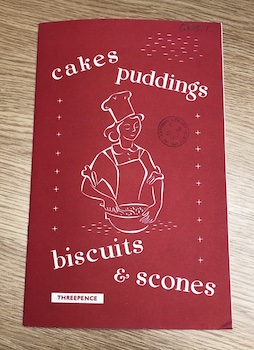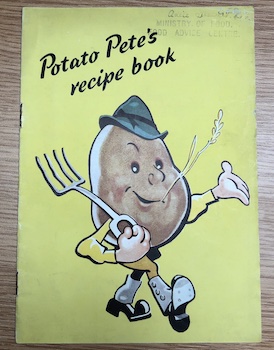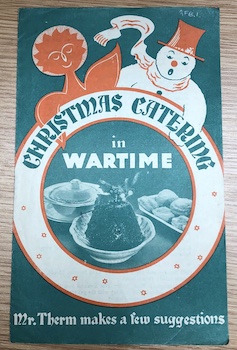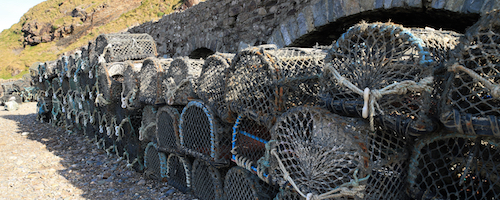Guest blog: The Ministry of Food and Digging for Victory
Published: 2 September 2022
With the current cost of living crisis, how far away are we from the government publishing materials aimed at educating how to eat better and how to 'grow your own'? In our second guest blog in the Food Catalyst, NLS Curator Sarah Thomson takes us back to WWII, Potato Pete, and the 'Dig for Victory' campaign.
 With the introduction of food rationing during the Second World War, the Ministry of Food was tasked with helping the nation through this tumultuous period. They played a vital role in educating people about nutrition, helping them eat healthily at a time when many foods were scarce. One way of doing so was by producing educational resources and recipe books so people could make the most of what they had.
With the introduction of food rationing during the Second World War, the Ministry of Food was tasked with helping the nation through this tumultuous period. They played a vital role in educating people about nutrition, helping them eat healthily at a time when many foods were scarce. One way of doing so was by producing educational resources and recipe books so people could make the most of what they had.
The National Library of Scotland holds a collection of these publications. They offer a fascinating insight into how the government supported people as they adapted to these challenges, which affected Britain’s kitchens for over a decade, from 1940 until 1954.
 Changes in the Kitchen
Changes in the Kitchen
Since many commonplace foodstuffs were suddenly in short supply, leaflets were distributed showing people how to adapt common recipes to accommodate rationing. For instance, one Ministry of Food recipe book from 1950 explained how best to bake cakes, scones and puddings at a time when ‘fats, eggs and sugars have to be raised to their highest common denominator’. A typical ration allowance was one fresh egg and 8 oz of sugar per person per week, so families would often have to combine their rations to be able to bake a simple sponge cake.
Recipe cards were also produced to help people cook with ingredients they might not have used before, such as dried eggs and powdered milk. Meat shortages meant additional guidance was prepared to help people eke out their meat rations or cook diverse types of meat including whale and horse meat.
It wasn’t just ingredients that were in high demand. There was also a national shortage of scales and measures, so guidance was prepared on how to improvise using other household materials like recycled jam jars.
Digging for Victory
The ‘Dig for Victory’ campaign encouraged families to grow their own food to supplement their rations, to ensure people had enough to eat. Unsurprisingly then, a sizeable proportion of the Ministry of Food publications offered creative ways for people to cook with common vegetables like carrots and potatoes.
Despite the seriousness of their subject matter, these leaflets and recipe books are brightly coloured and often illustrated. They’re upbeat and encourage readers to remain positive despite the challenges they were facing. The jaunty cartoon character ‘Potato Pete’ adorned the cover of one cookbook, promising to show readers ‘a thing or two’ about how to ‘make your rations go further.’
Seasonal guidance was also circulated to help people prepare for Christmas meals using rationed foods, and another leaflet taught people how to make pancakes for Shrove Tuesday using dried eggs, which was another way to bolster national morale.
 Nutrition
Nutrition
It was also important to educate the population about the importance of good nutrition at a time when food was scarce. The Ministry of Food published leaflets guiding mothers on how to wean breastfed babies using foods available through rationing, and subsequent leaflets covering distinct stages of children’s lives. Another leaflet in the collection addresses cooking for people with chronic illnesses and disabilities, which was especially important in the context of soldiers returning from war. (Please note, some of the language expressed in this leaflet/image is outdated by modern standards).
There was also a wealth of information about how to preserve and season foods in new ways, such as growing a herb garden and how to dry and salt surplus fruits and vegetables so that seasonal produce would last longer.
Perhaps you’d like to try your hand at baking a cake or preparing a meal using one of these recipes? All the Ministry of Food recipe cards and books discussed in this blog post can be requested and viewed in the National Library of Scotland reading rooms at George IV Bridge, Edinburgh.
Meet the Author: Sarah Thomson is Curator of Government and Civic Literacy at the National Library of Scotland. She is also a final-year PhD candidate in History at the University of Edinburgh, with research interests in modern American and British political history.
First published: 2 September 2022
<< Food Blog


